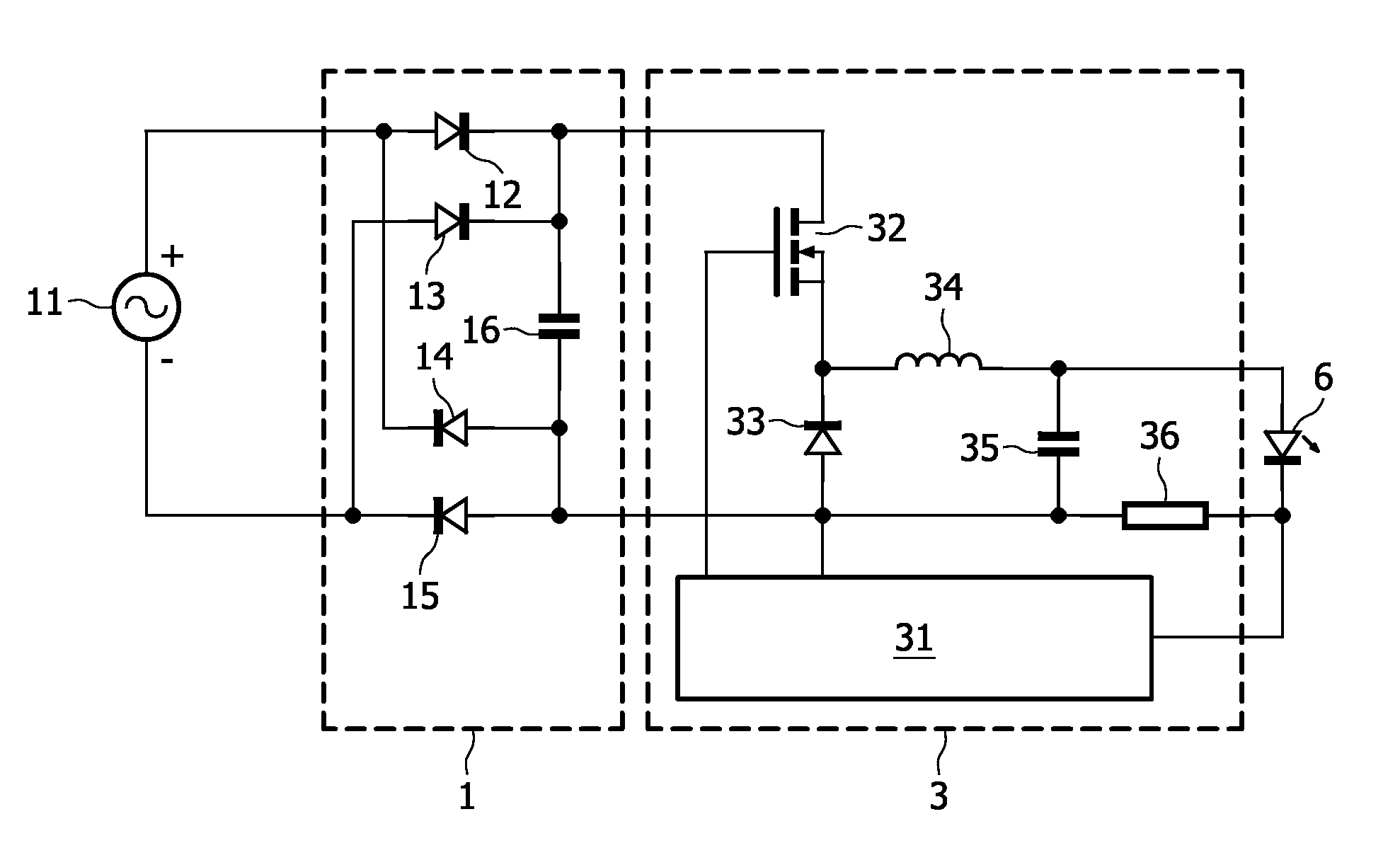Supplying a signal to a light source
a technology of supply circuit and light source, which is applied in the direction of lighting apparatus, light sources, electroluminescent light sources, etc., can solve the problems of visible flicker, large ripple in output voltage, disadvantages of prior art disclosure, etc., and achieve the effect of reducing visible flicker
- Summary
- Abstract
- Description
- Claims
- Application Information
AI Technical Summary
Benefits of technology
Problems solved by technology
Method used
Image
Examples
Embodiment Construction
[0047]FIG. 1 shows a mains voltage Vm and a simulated mains current Im in its upper graph and a mains power Pm and a mains function Sm in its lower graph for a lamp fed by a prior art supply circuit. This current shape is typically found when an electrolytic capacitor is charged via a standard diode rectifier. The harmonic content is quite high, but this is not an issue with small lamps (for example 25 Watt) owing to the fact that there is a legislation exception for such small lamps. When applying the mains current Im without energy storage to the lamp, the light fluctuation is equal to the Sm function. To visualize the effect, this depiction in the time domain may be transferred to the frequency domain, as shown in FIG. 2.
[0048]FIG. 2 shows a frequency spectrum of the power of the lamp when fed with the distorted mains current shown in the FIG. 1. Apart from a DC light emission with a 26 Watt amplitude there is a significant component at 100 Hz with a 20 Watt amplitude, which is 7...
PUM
 Login to View More
Login to View More Abstract
Description
Claims
Application Information
 Login to View More
Login to View More - R&D
- Intellectual Property
- Life Sciences
- Materials
- Tech Scout
- Unparalleled Data Quality
- Higher Quality Content
- 60% Fewer Hallucinations
Browse by: Latest US Patents, China's latest patents, Technical Efficacy Thesaurus, Application Domain, Technology Topic, Popular Technical Reports.
© 2025 PatSnap. All rights reserved.Legal|Privacy policy|Modern Slavery Act Transparency Statement|Sitemap|About US| Contact US: help@patsnap.com



